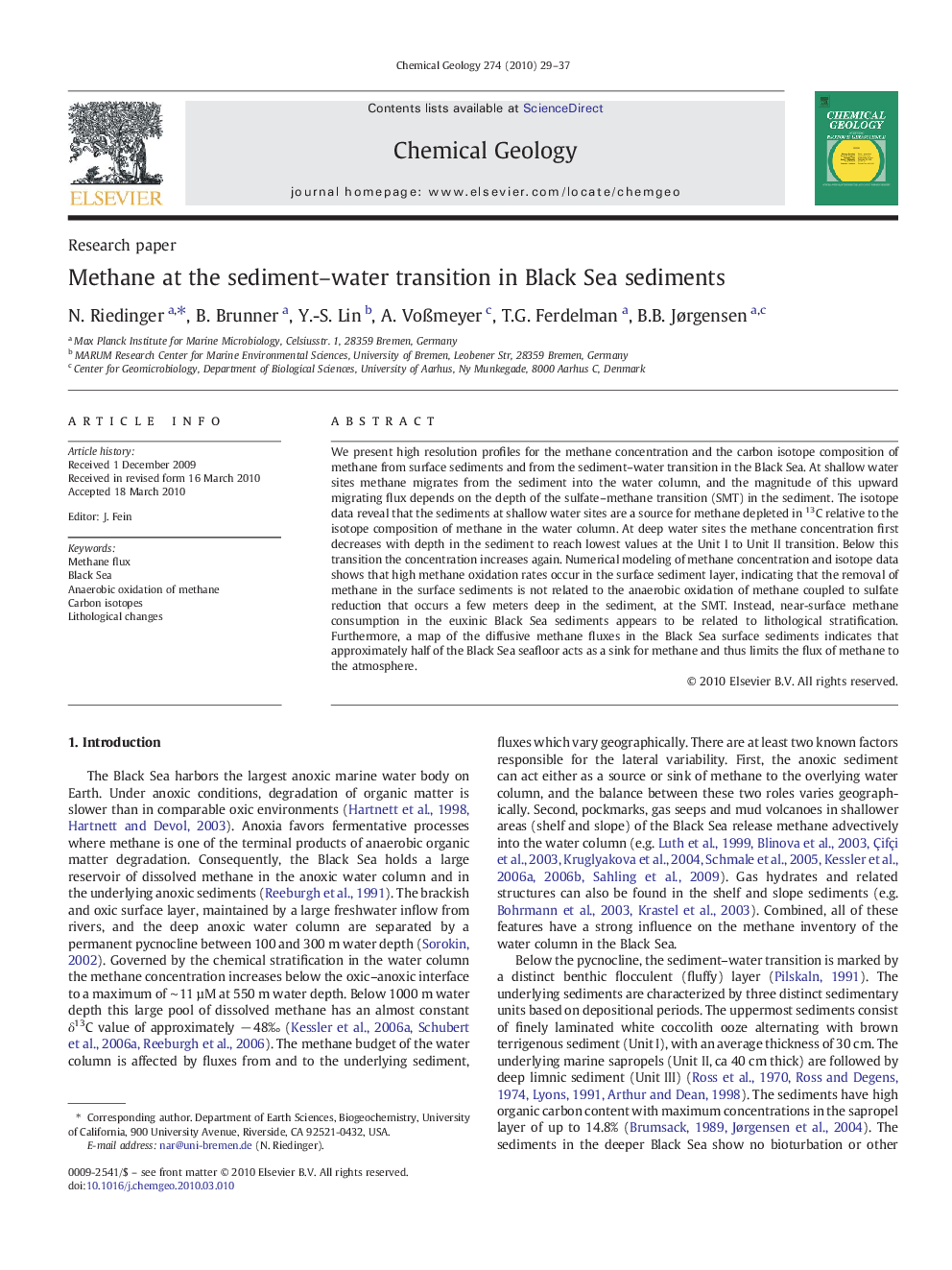| Article ID | Journal | Published Year | Pages | File Type |
|---|---|---|---|---|
| 4699957 | Chemical Geology | 2010 | 9 Pages |
We present high resolution profiles for the methane concentration and the carbon isotope composition of methane from surface sediments and from the sediment–water transition in the Black Sea. At shallow water sites methane migrates from the sediment into the water column, and the magnitude of this upward migrating flux depends on the depth of the sulfate–methane transition (SMT) in the sediment. The isotope data reveal that the sediments at shallow water sites are a source for methane depleted in 13C relative to the isotope composition of methane in the water column. At deep water sites the methane concentration first decreases with depth in the sediment to reach lowest values at the Unit I to Unit II transition. Below this transition the concentration increases again. Numerical modeling of methane concentration and isotope data shows that high methane oxidation rates occur in the surface sediment layer, indicating that the removal of methane in the surface sediments is not related to the anaerobic oxidation of methane coupled to sulfate reduction that occurs a few meters deep in the sediment, at the SMT. Instead, near-surface methane consumption in the euxinic Black Sea sediments appears to be related to lithological stratification. Furthermore, a map of the diffusive methane fluxes in the Black Sea surface sediments indicates that approximately half of the Black Sea seafloor acts as a sink for methane and thus limits the flux of methane to the atmosphere.
